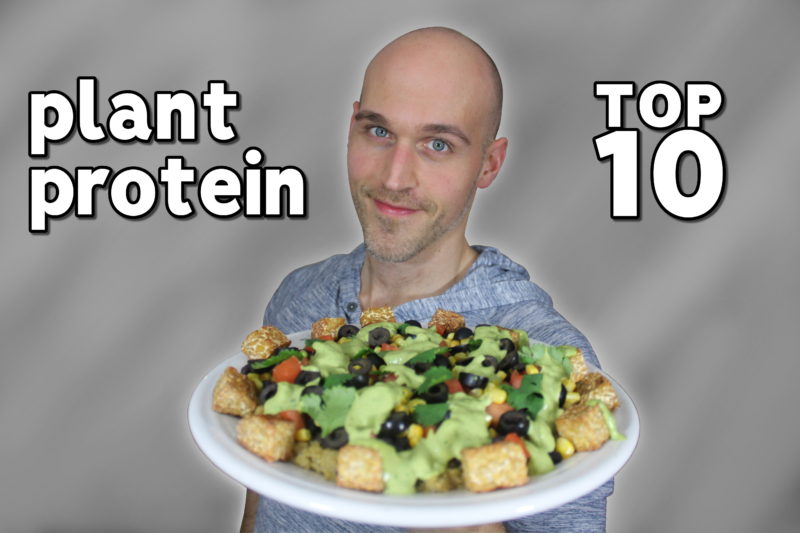
10 Plant Protein Sources You Should Try (And How To Prepare Them)
One of the most common questions I get is, “where do you get your protein on a plant-based diet?” There seems to be a lot of confusion out there when it comes to protein, so I figured a detailed post about some of my go-to sources was in order.
Plant protein sources are actually very abundant. Amino acids, which comprise “protein,” are found in literally every whole, plant-based food
source, so you’ll never be without protein on a plant-based diet. Everything from apples to zucchini have some protein. Therefore, the key to increasing your
protein intake when you’re eating a vegan diet is simply to focus on the foods that are higher in protien then others.
So, naturally, your next question is probably: “okay, but which plant-based foods are higher in protein? ”
This post contains ten of the many examples you should try.
Source #1: Legumes (A.K.A. Beans)
Beans, beans,
the magical fruit,
the more you eat,
the more protein you’ll have in your diet!
Legumes are easily in my top 3 sources of protein, if not in the #1 spot. And the reason why? They deliver a whopping 15 grams of protein per cup (depending on the variety of bean)! That’s quite a lot when you consider that I can easily chow down 2 cups in a meal when I’m hungry.
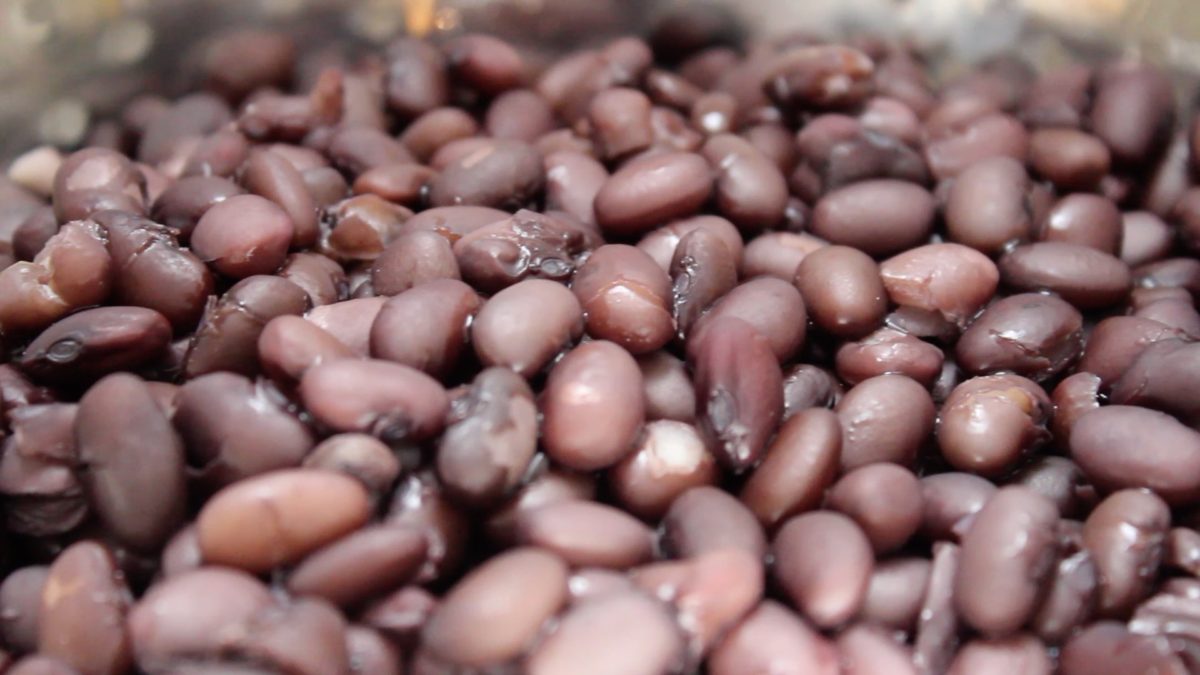
The above photo shows some black beans I cooked up yesterday. Although I do resort to canned beans quite often (hey, I have a busy schedule, what can I say?), I do prefer them cooked from dry when I have the time for it. By cooking the beans from dry, you avoid the extra sodium from the canned version while simultaneously getting a fresher and tastier end product.
The steps to cook beans from dry are pretty simple:
- Soak the beans in a bowl of water overnight (at least 8 hours)
- Drain and rinse the beans in a colander after the soak
- Bring the beans to a boil, then drop to a simmer for 40-60 minutes
- Rinse again in a colander once they’re done cooking
As you’ll see later in this post, I like to add beans to a variety of dishes, such as a good stir fry, tacos and other Mexican dishes, and even use them in dessert recipes such as brownies.
Source #2: Quinoa
A lot of people confuse quinoa as being a grain, but it’s technically a seed that cooks, tastes and even looks like a grain. For this reason, I’ve seen it referred to as a “pseudo grain.”
Well, whatever it is, I like it! And it packs a bunch at 8 grams of protein per cup cooked, so it’s always a welcome addition in my diet.

Quinoa starts off as tiny seeds and then cooks into a fluffy, sprouted-looking grainy texture as shown in the photo above.
The process to cook quinoa is pretty quick and easy:
- Measure out two parts water to 1 part dry quinoa (i.e. 2 cups water to 1 cup dry quinoa)
- Bring the water to a boil on the stove top
- Drop in the quinoa and then lower to a simmer
- Simmer for 20 minutes or so; until water is absorbed and evaporated
- Fluff with a fork
It’s simple and pretty fast to cook. If you haven’t tried it before, give it a shot next time you have a recipe that calls for rice. I substitute it for rice all the time and haven’t been disappointed.
Source #3: Tempeh
Before I dive into tempeh and how awesome it is, I want to mention that, yes, it is a soy product, and yes, I do eat soy quite often, but NO, I have not experienced any issues whatsoever in terms of soy being an endocrine disruptor.
Quite honestly, I think the whole “soy scare” about it containing phytoestrogens is not a concern, unless someone is consuming unrealistic amounts of soy from tons of processed sources every day.
And let’s not forget about all the hormones pumped into the chicken and other animal products people eat on a daily basis. Shouldn’t that be a concern more than soy?
Here’s some more good news: Tempeh is very minimally processed compared to tofu and other sources of soy. It’s basically a cake or brick of fermented soy beans. That’s it!

Tempeh may not look too appetizing when you take it out of the package, but after you dice it up into cubes, add spices and bake it at 350 degrees in the oven for 30 minutes, it’ll look (and smell) amazing!

Here’s a sort of Tex-Mex dish I threw together. You can see the baked tempeh surrounding it along the rim of the plate.
Underneath all the toppings you’ll find some of the beans and quinoa I cooked earlier for this post. I topped it with corn, sliced black olives, diced Roma tomatoes and some cilantro leaves. Then I poured a tasty tahini/cilantro/lime sauce over it all.
Tempeh is a great source of protein. Just 3 ounces of tempeh delivers 15 grams of protein, which makes it a great way to boost the protein content of your meal.
Source #4: Nutritional Yeast
Nutritional yeast, or as some refer to it, “nooch,” is a deactivated yeast that contains lots of vitamins, minerals and amino acids (protein), similar to a brewer’s yeast used for making beer and wine.
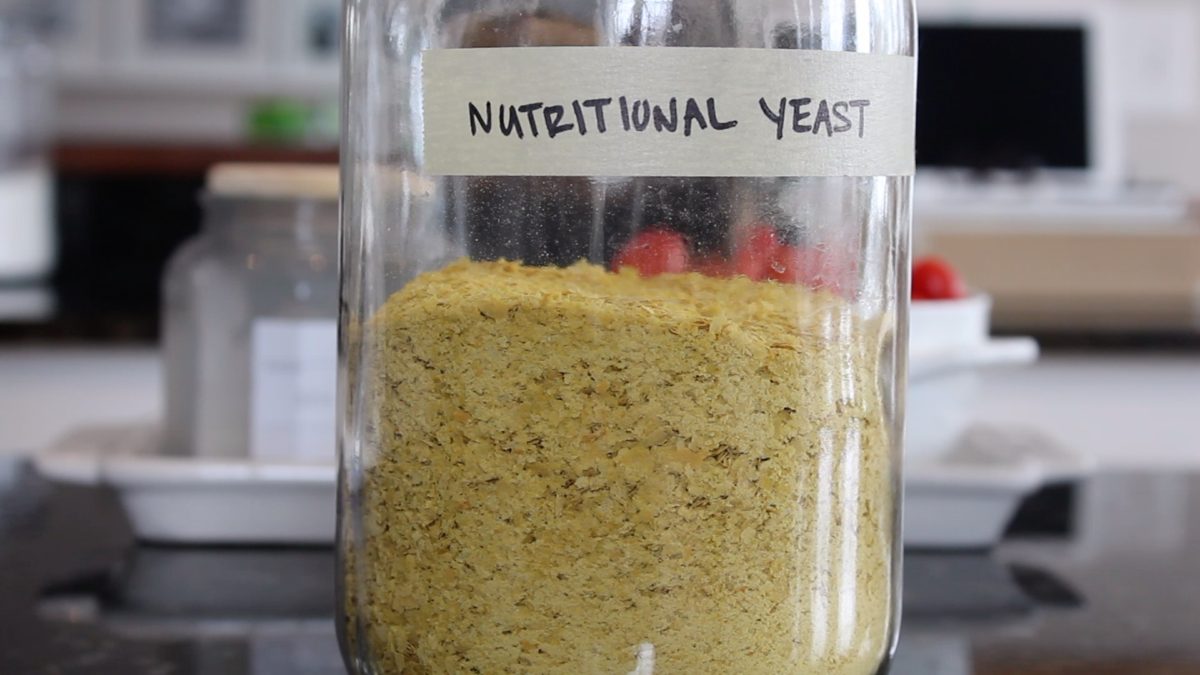
The yeast flakes can be added to a variety of dishes to lend a buttery or cheesy flavor. I sprinkle it on 100% whole grain lasagna, use it in plant-based pizza recipes, and make a variety of dressings and sauces with it.
Here’s the recipe I used for the tahini/cilantro/lime sauce I put on the Tex-Mex dish earlier in this post:
- 1 cup cilantro leaves
- 1/4 cup tahini
- 2 Tbsp nutritional yeast
- juice of 1 lime
- 1 garlic clove
- 1/8 tsp cayenne pepper (optional, for heat)
Put all the above ingredients into a blender, then blend while adding 1 Tbsp of water at a time until reaches the consistency you like for your sauce.
At about 3 grams of protein per tablespoon full, nooch does a great job of boosting the protein content of your meal in a very subtle way.
Source #5: Spelt
Spelt is quickly becoming one of my favorite grains. It’s a hearty, chunky grain that’s filling, nutritious and tasty. It reminds me a bit of farro for anyone who’s familiar with that grain as well.
In its raw form, spelt starts off as small kernels that look very similar to wheat berries. And on that note, I should mention that spelt does contain gluten, so anyone with celiac disease or gluten intolerance should avoid this grain.

To cook spelt, soak it in a bowl of water overnight, the same way you would when cooking legumes from their dry form.
Once the soak is done, drain and rinse the spelt berries in a colander, then get them simmering on the stove top. Do a taste test after 60 minutes to see if they’re at a texture and firmness you like. I typically cook my spelt for about 1 hour, as long as it had a good overnight soak.
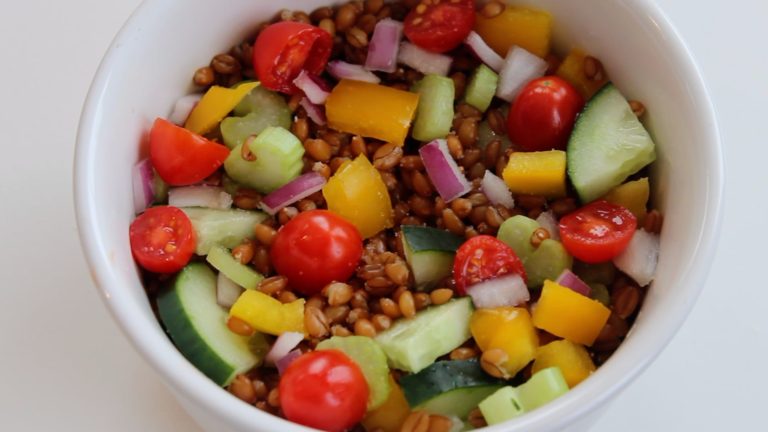
My favorite way to enjoy spelt lately has been in a simple grain bowl. I mix it with raw vegetables and add a little salt. It’s absolutely delicious.
And of course, spelt made the list because it’s one of the higher protein grains I’ve come across, weighing in at 10 grams of protein per cup cooked.
Source #6: Hemp Seeds
For the next source, we’re going to dive into the meals we eat to get in our greens: salads and smoothies!
Whether it’s a green salad with a variety of veggies or a green smoothie with lots of sweet fruit, sprinkling in some delicious hemp seeds is a great way to boost the protein of your meal.

Hemp seeds are small, rather soft seeds that have a walnut-like flavor (in my opinion) and can subtly add 10 grams of protein per 3 tablespoons to any meal with greens.
For salads? Just sprinkle on the hemp seeds as a topping or blend them into the dressing.
For smoothies? Add 3 Tbsp to the base liquid before blending it all up.
You won’t even know the hemp seeds are in your smoothie, but you’ll be getting an extra 10 grams of protein. This is how I give my smoothies a boost and make them great post-workout meals.
Source #7: Lentils
Lentils are another amazing protein source that I put up there with beans. They pack quite a punch at a whopping 18 grams of protein per cup. Their flavor is interesting, too. Very earthy and hearty, yet bland enough that you can mix them with a variety of other foods to blend with your favorite spices and sauces.
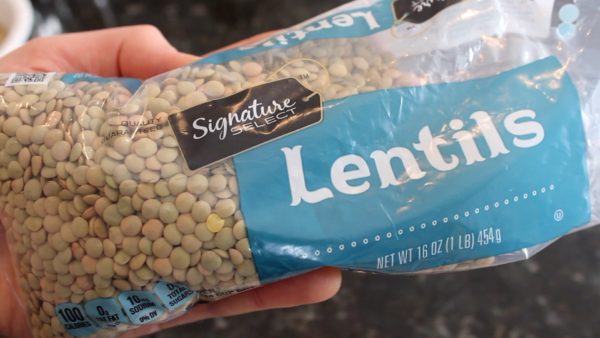
They’re pretty easy to cook, too. Just drop them in boiling water (any amount that covers them completely) and simmer for about 20 minutes, until they reach your desired tenderness.
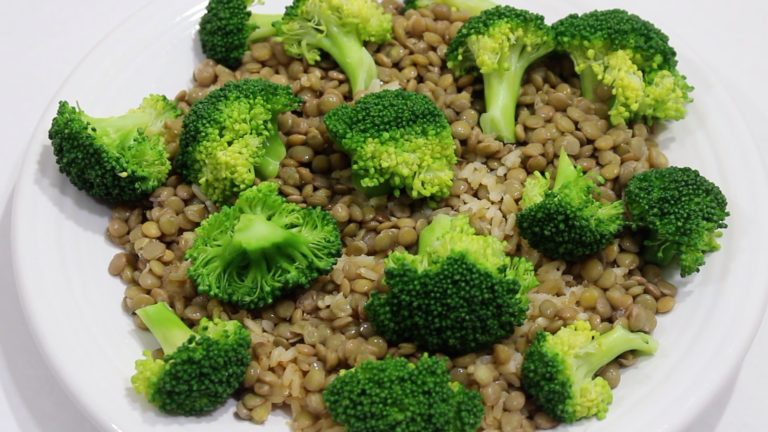
One of my favorite ways to eat lentils is to serve them on a bed of rice, topped with steamed veggies. I’ll often make a nice sauce to pour over it too. The plate above with brown rice, lentils and broccoli has 32 grams of protein. Not too shabby!
Source #8: Natural Peanut Butter
I’m not trying to plug a specific brand here. I only want to show that any decent grocery store should carry “natural” peanut butter made by common brands now.
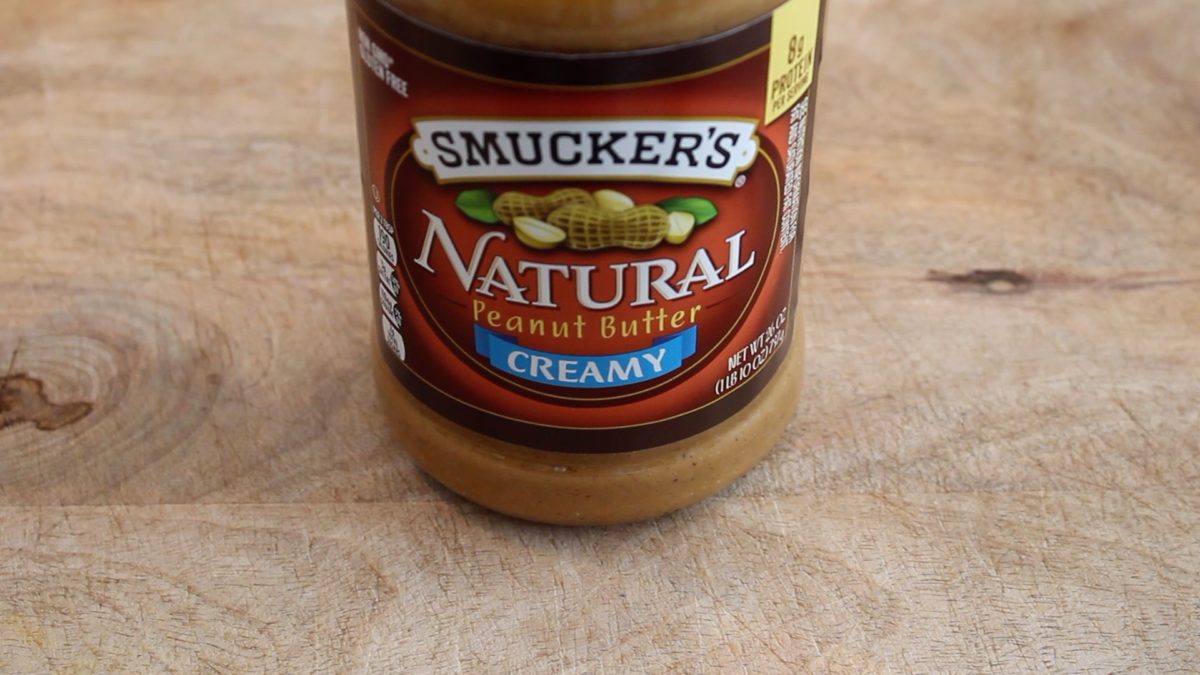
I much prefer creamy over chunky, but either option is good. The “natural” part of any peanut butter means it’s only ground peanuts and maybe some salt. No other ingredients. The product has no refined sugar or oil added, so it’s much closer to being a “whole food.”
With nearly 8 grams of protein per serving, it’s a great spread for fruit, sandwiches or toast when you want to increase your protein for a meal.
Source #9: Whole Grain or Sprouted Grain Bread
A lot of people put down bread saying it’s not a whole food, but that depends on what type of bread you’re talking about.
If the bread you buy says “100% whole wheat” or “100% whole grain” on the label, that means the entire grain (bran, germ and endosperm) are all intact, thus making it a whole food. But keep in mind it needs to say “100%.” Without that number, there’s no guarantee it’s whole grain.
Additionally, if it’s a sprouted grain bread, that also means it’s a whole food, because you can’t sprout grains if they aren’t whole.
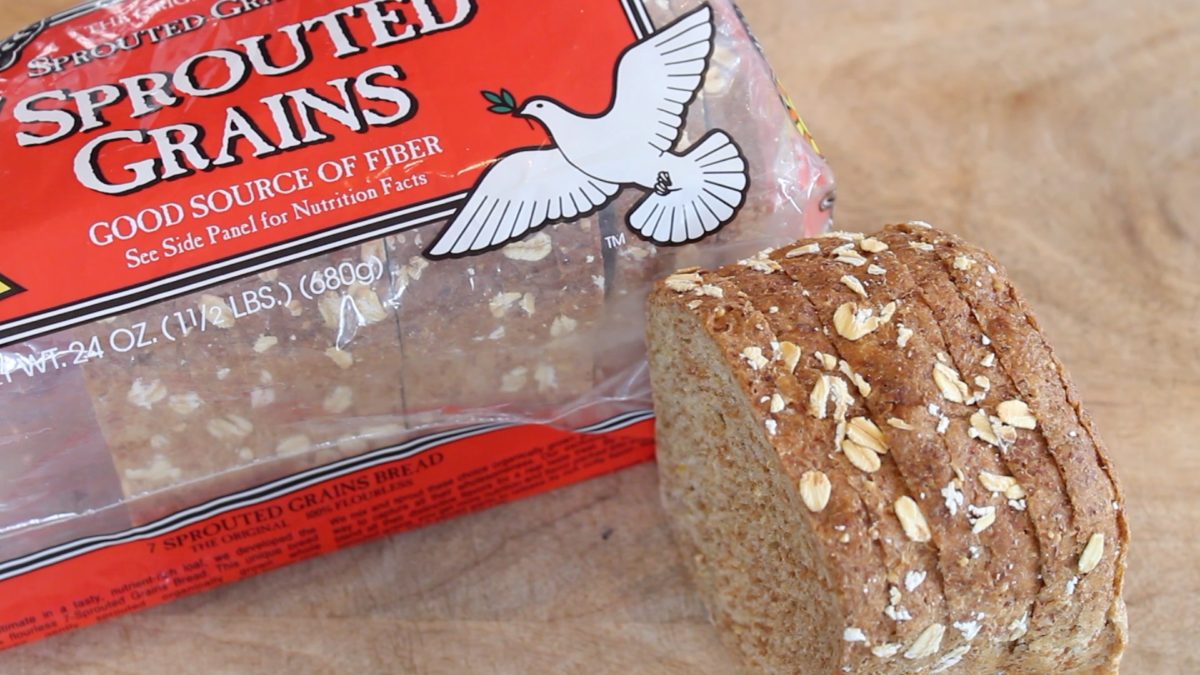
I love a good sprouted or whole grain bread. It’s much heartier and tastier than bread from refined flour, and one slice typically averages 4 grams of protein. So, if I eat two sandwiches in a meal, I get 16 grams of protein from the bread alone.
Source #10: Soy Milk
Plant milk may not be the first option that comes to mind when it comes to protein, and for good reason because most of the plant milks available are pretty low on the protein scale.
But soy milk? That’s a different story. It’s so high in protein, they even boast it on the cartons now.
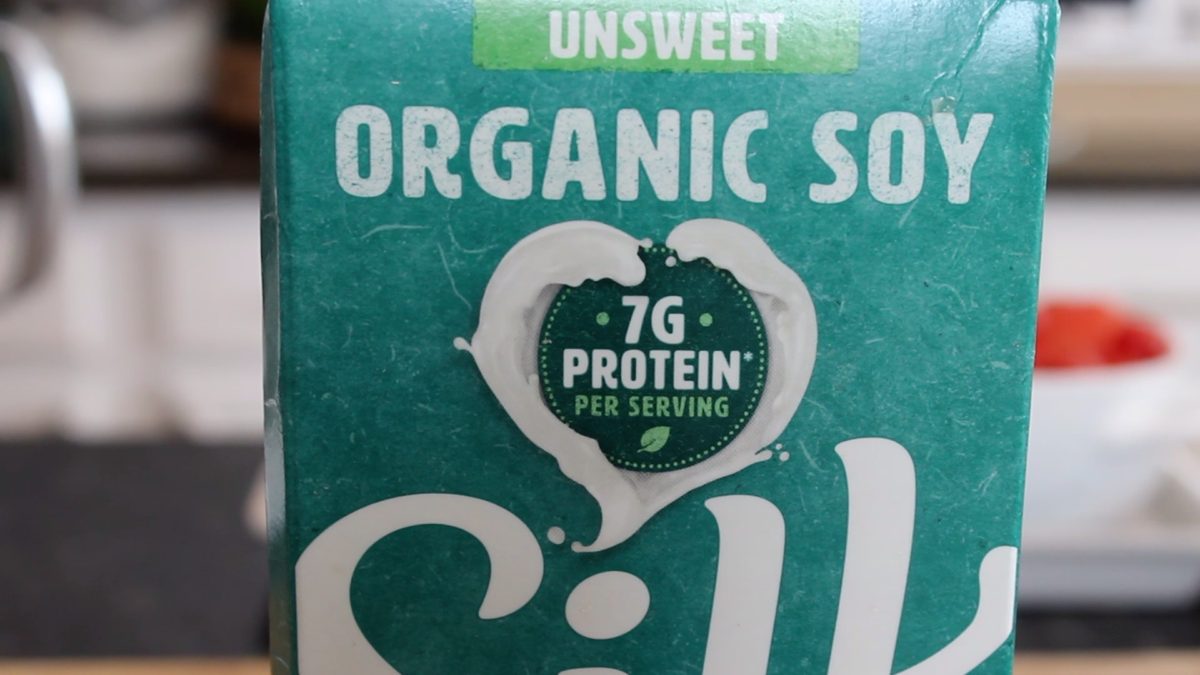
Delivering a whopping 8 grams per serving, a single 12-oz glass of milk will give you a 12 grams of protein. That’s just as much as real dairy milk!
Put It All Together For High Protein Vegan Meals
So there you have it! 10 different healthy plant-based sources of protein that you can start trying right away. And the best way to use them is to simply combine them into different dishes.
Here’s an example. I took the last 3 items in the above list and put them together to make these peanut butter and honey sandwiches, served with a glass of soy milk. Over 30 grams of protein right there!.
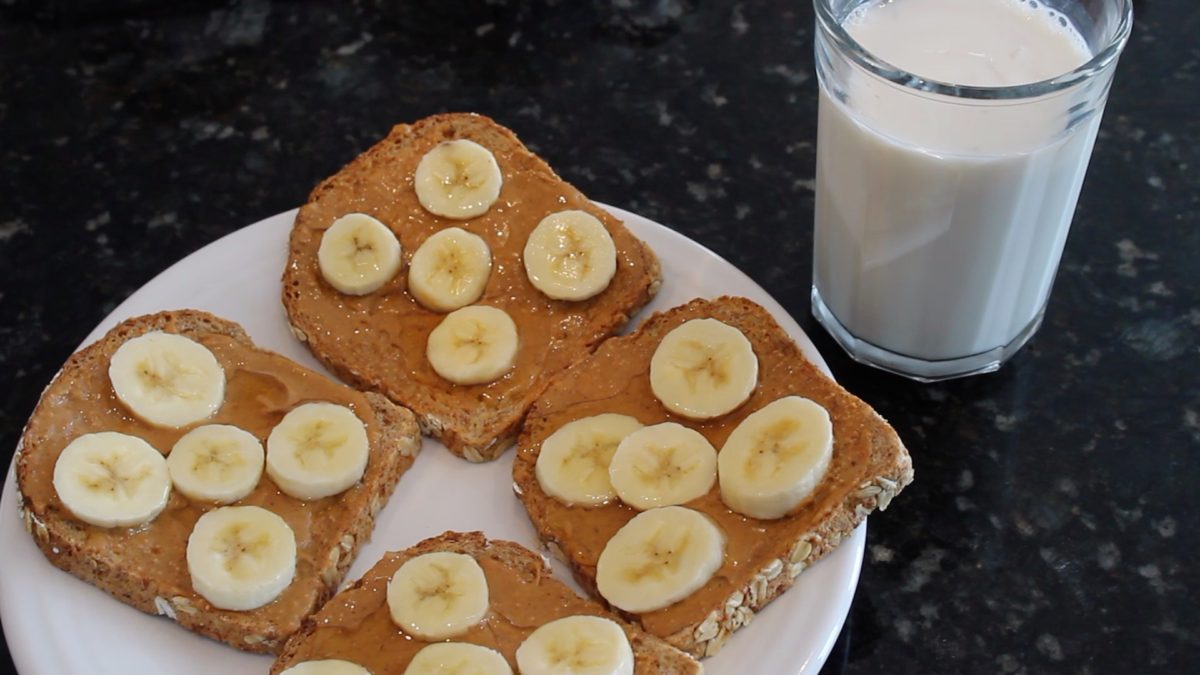
(And yes, I know honey isn’t vegan. But it’s free of cholesterol and doesn’t kill the bees, so I don’t sweat it. It’s too damn sweet and tasty)
Try to get creative with your meals. Combine different sources with some of your favorite spices, sauces and dressing to make great dishes that you’ll enjoy.
I hope the list helps!
Share This Story, Choose Your Platform!